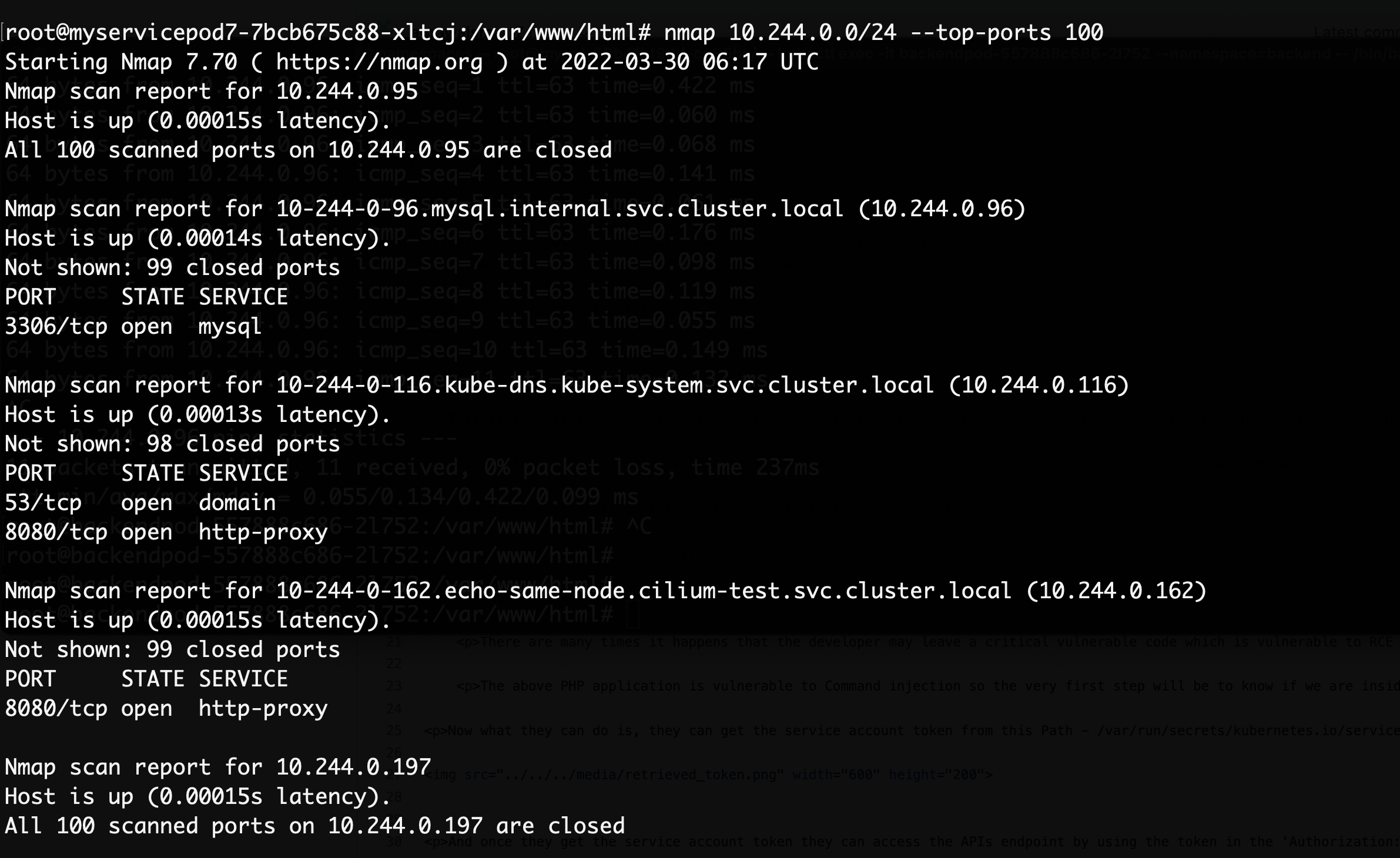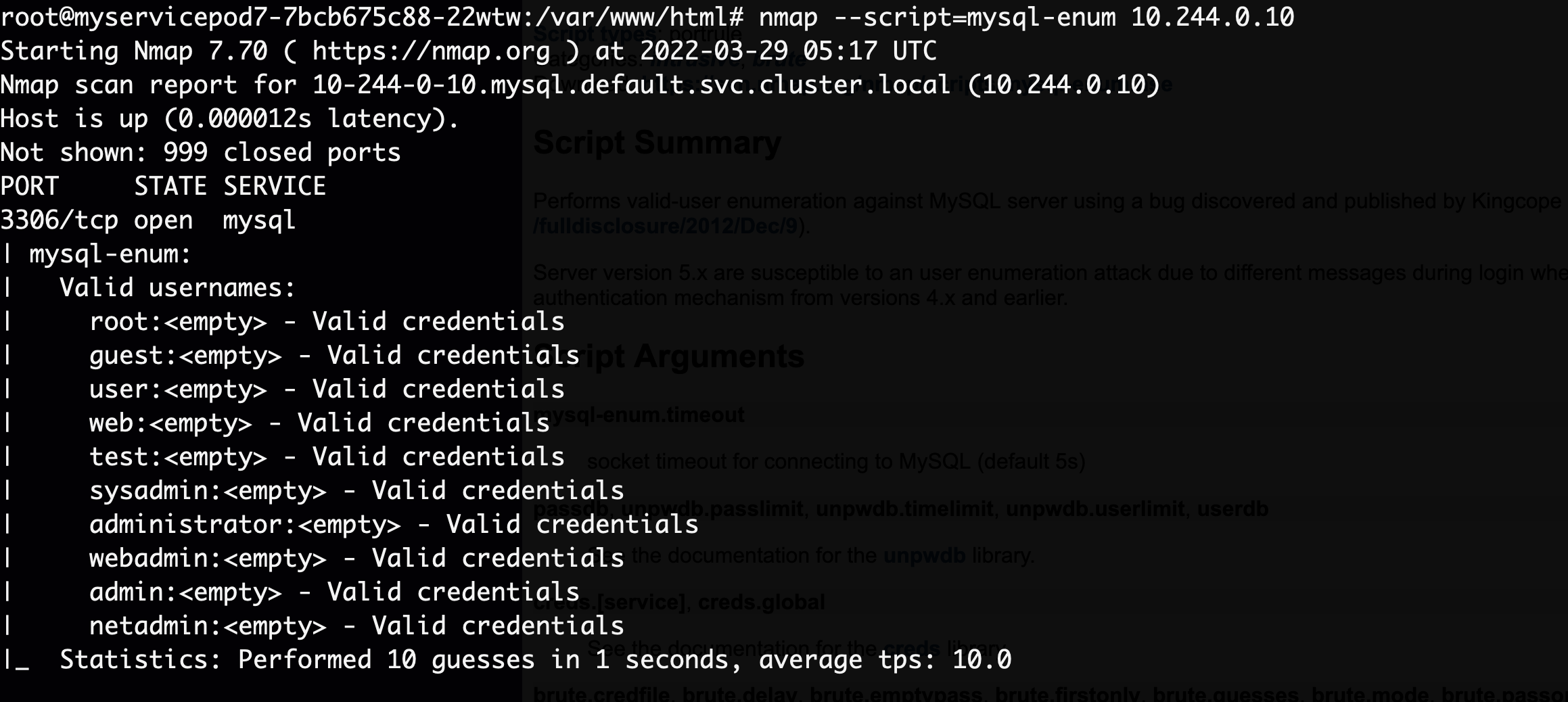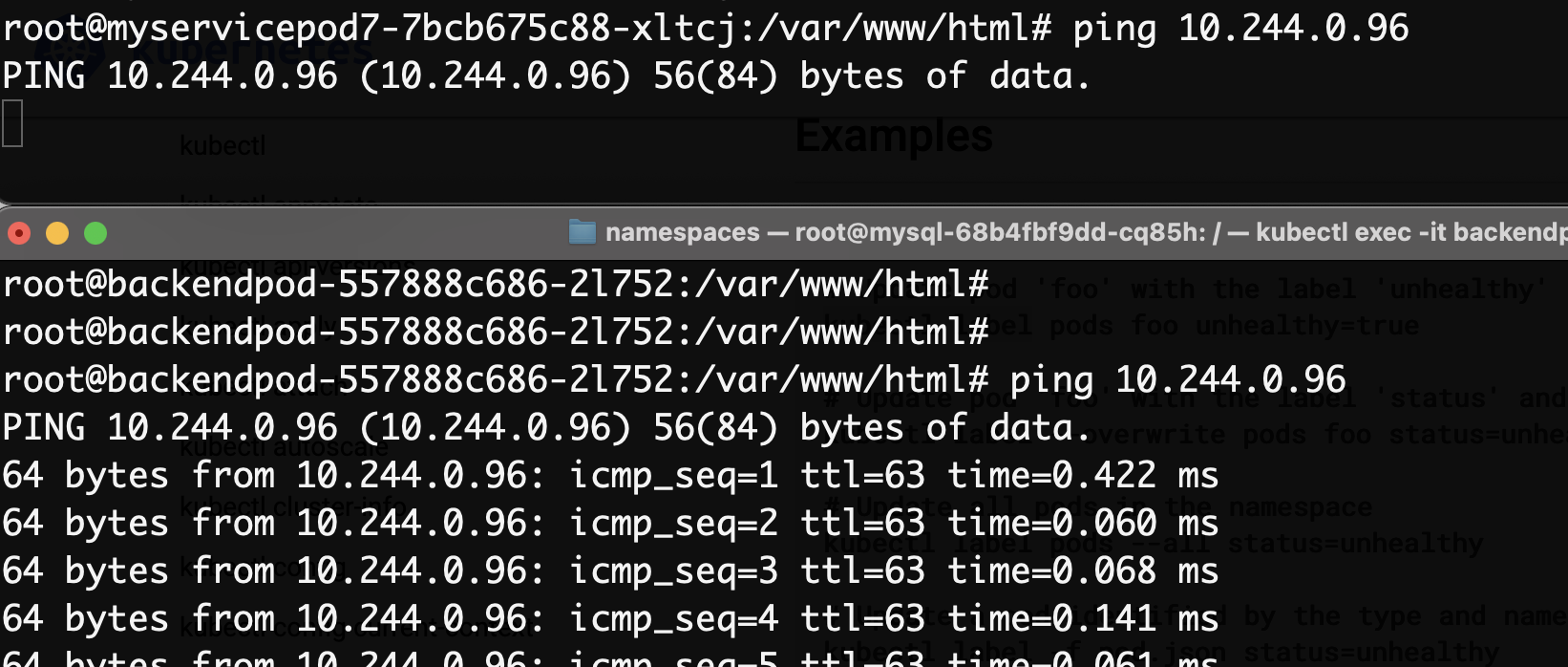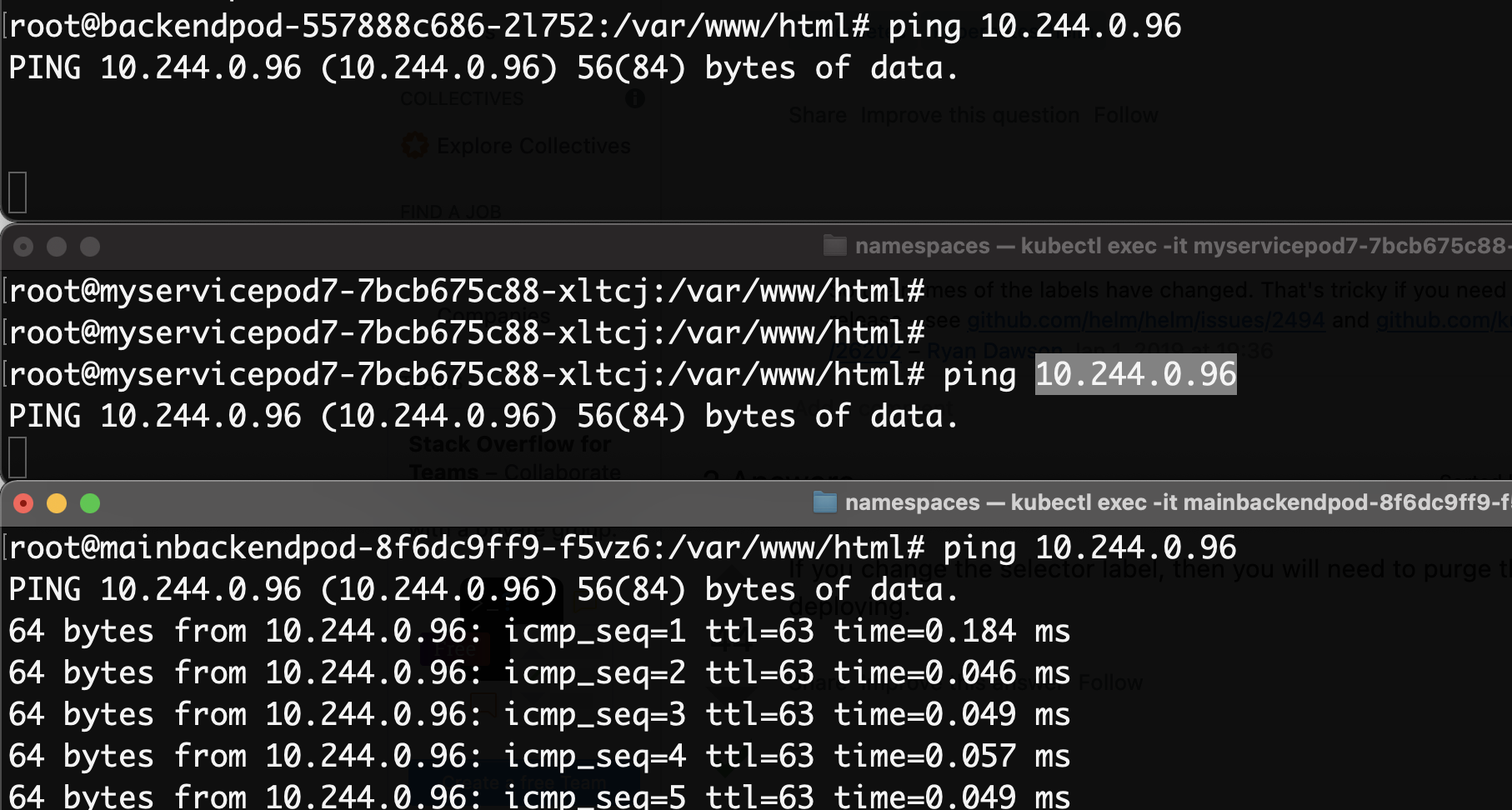Hi all,
Welcome to the blog post,
This is the 2nd post on the series of Kubernetes Attack and Defense. If you haven't read out the first part, you can follow up here.
This post focuses on Importance of Network Security with Practical example.
Network Policies are a great way to secure your system from outsiders, they work like Firewall where you can define the type of network policy such as Egress or Ingree or Both. We can apply the Network Policy on either Pod or NameSpace.
We will first check the environment where there is no network policy is in place and we will see what can be the consequences and what can the attacker do, if environment gets compromised?
Here you can check we have main deployment where the users can access the data and retrieve the data ( More shorten way - The Frontend Application named as servicepod7). Now we also can see that there is another MySQL POD running in the same namespace default as running our frontend application.

By the way, PODs are non-isolated even if they are in different namespace, that means they can still talk to each other.
So this is the application that is running and as this is demonstration purpose, this application is vulnerable to Command Injection. So suppose you somehow get access to their servers, either by Command Injection or any service credentials such as SSH on github, or by Social Engineering.

Now the first thing the attacker will try to do is either to escalate their privileges or increase the attack surface by survillencing the services and ports running in the network.
I tried to scan the network via Nmap. Now you definetly not get the nmap installed machine, you can either run the bash script or install the nmap via apt. ;)
So I scanned the network and I found mysql port running over one of the machine and some other ports as well. Here is the results.

Now I can just simply try to enumerate the service and check for any vulnerability, such as CVE if outdated version is used or default password, or bruteforcing. Attacker can use nmap scripts to check if any default creds are in use.

So this shows that our system have some lack of security.
1) Default Credentials are in use
2) SQL service was accessible by Frontend application
Now what if I just change the default credentials of mysql, will this be enough to get secured from lateral movement. Yes, default credentials will work but did we think that why SQL service should be accessible by frontend application.
Why not we create a backend service application (pod) and only that pod can access the MYsql database, that sounds more secure, isn't it?
We will try to impose Network Policy so that SQL pod can only accessible by the backend service (not kubernetes service) or POD (in this case).
So I created three namespaces
1) frontend
2) backend
3) internal.
Now what I wanted is, pods inside internal Namespace should be accessible only by pods inside backend namespace and not by any pods inside any namespaces. Hope this structure defines it well.

These are the pods running inside their namespaces.



We have created the namespaces now the next step is to create a network policy that will done the work that what we wanted to be done.
Network-Policy.yaml
apiVersion: networking.k8s.io/v1
kind: NetworkPolicy
metadata:
name: network-policy
spec:
podSelector:
matchLabels:
app: mysql
policyTypes:
- Ingress
- Egress
ingress:
- from:
- namespaceSelector:
matchLabels:
project: backend
egress:
- to:
- namespaceSelector:
matchLabels:
project: internal
If we try to scan the network again via Nmap we will see that the Nmap failed to scan the SQL Pod that means, our frontend application can not access the SQL pod.
To verify this, we can see the ping results,

Here we can verify that the network policy is working accurately and this is how we can minimize the attack surface for the attacker.
Now if you wanted to allow connections only from specific pod inside specific namespace, this policy will do that. This policy allows connections tomysql POD from only pod that contains mainbackendp label from the namespace backend.
Network-Policy-2.yaml
apiVersion: networking.k8s.io/v1br>
kind: NetworkPolicy
metadata:
name: network-policy
spec:
podSelector:
matchLabels:
app: mysql
policyTypes:
- Ingress
- Egress
ingress:
- from:
- namespaceSelector:
matchLabels:
project: backend
podSelector:
matchLabels:
app: mainbackendp
egress:
- to:
- namespaceSelector:
matchLabels:
project: internal
I tried to ping mysql server from each pod and find out that I was unable to ping mysql pod from other pods that do not have the mainbackendp label set.

That's all for this blog post, the main objective for this blog post is to show the importance of network policy inside kubernetes.
We will talk more about kubernetes security in future posts.
Hope you found this blog useful
Thanks for your time